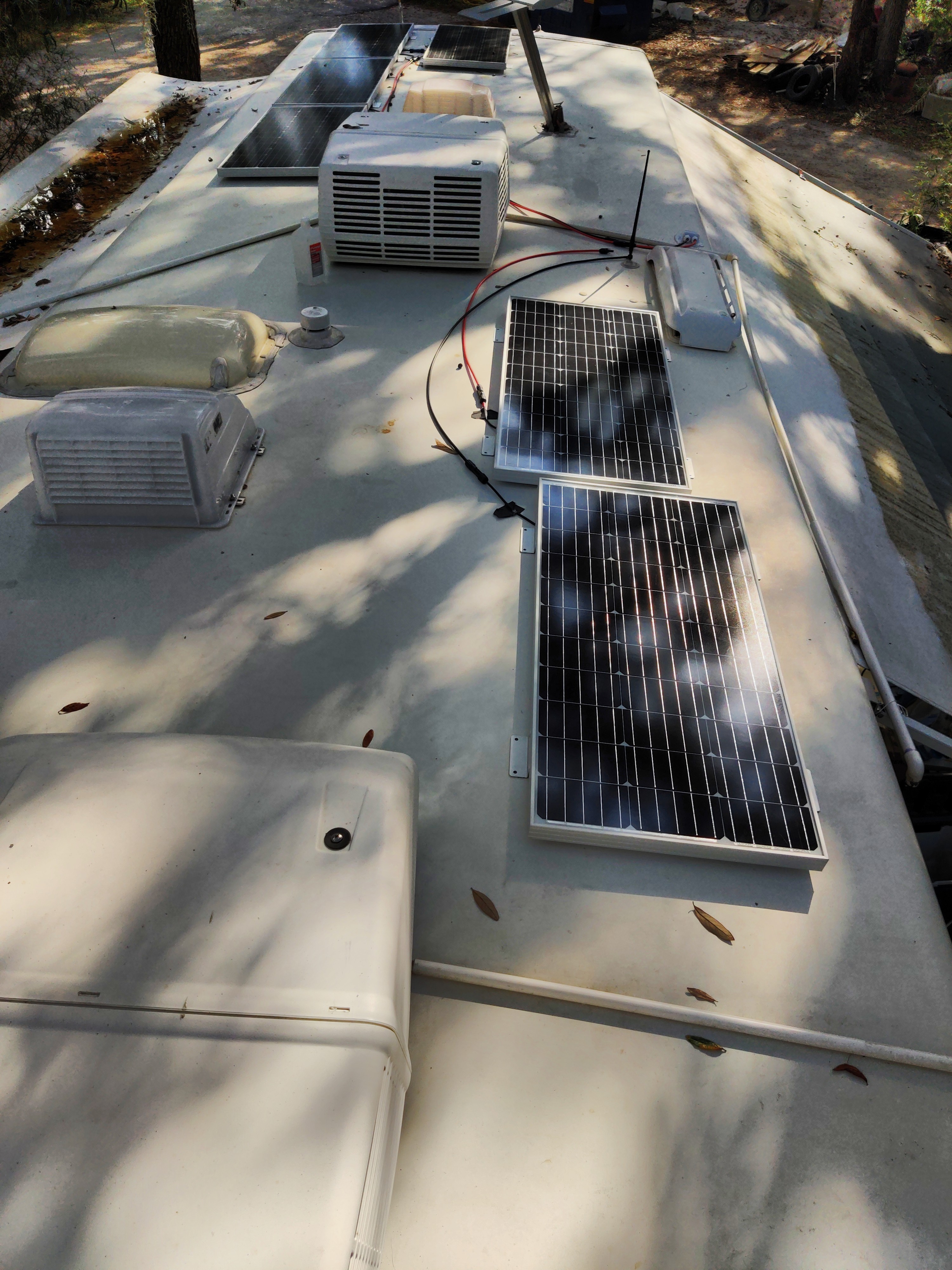
 I installed four 100 watt panels flat on the curved roof of my RV in two series strings paralleled. About a month later, I added two more 100 watt panels in series and paralleled them with the existing strings.
I installed four 100 watt panels flat on the curved roof of my RV in two series strings paralleled. About a month later, I added two more 100 watt panels in series and paralleled them with the existing strings.
 ltage and amperage tests themselves and for each of the three series strings.
ltage and amperage tests themselves and for each of the three series strings.
I moved the RV into full sun and tried a bunch of different configurations of this string with that string, and no matter what, when all three strings are paralleled, the output is crap. I swapped around the branch connectors, resistance tested my cables, rechecked each panel and each string for OC voltage and amperage, switched cables around, tried every combination and permutation I could think of. And no matter what, the controller refuses to produce when all three strings of two series panels are connected. I can combine any two strings with any cables, and any combination of branch connectors, and get acceptable and expected output for the way they're mounted.
The controller is a Victron 100|30 Smart. Feeding four Trojan T-105's.
Now before you say 'that's too much; you're going to fry your controller', please take a look at how they are installed and note the curvature of the roof. I over-paneled for a reason. It is impossible for any single panel to get full sun at anything less than a 30 degree angle of incidence, let alone all of them at once. Furthermore, the way I use my RV frequently has it well shaded. The highest efficiency I have seen yet with the four panels is about 50%. My calculations lead me to believe this is well within the controller's tolerances. Am I wrong in this thinking?
Are the lengths of the cables being unequal somehow an issue; are these controllers so sensitive that milliohms matter? Is there some other electrical phenomenon that I've fallen prey to? I've included a few screenshots of the controller's behavior. When all three strings are connected, it seems to exhibit a seeking behavior, but never makes up it's mind. What that I am missing here?
I've previously queried a FB group with substantially the same questions and received many suggestions for things to check which I had already done multiple times. The emerging consensus there was that I need to buy another controller. I'm being told that I can't parallel three strings into one controller. Is that the case? That makes no sense to me. Would four strings work? Could something downstream cause this?
I think the biggest clue is the 'hunting' behavior of the controller, but I'm beyond stumped and pulling my hair out. HELP! And if you're in the Tampa area, I'll buy you a beer or two...
Thanks so much for any and all enlightenment!
